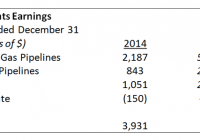Wall Street ‘Preparing For Panic’
By Tim Maverick The Wall Street Journal put it succinctly: “Wall Street is preparing for panic on Main Street.” Or, more accurately, panic among retail investors. You may recall how money managers like John Paulson made a reputation betting against sub-prime mortgages. This time around, some hedge funds think they’ve found a weakness in high-yield bond mutual funds and exchange-traded funds (ETFs). Apollo Global Management (NYSE: APO ) and Oaktree Capital Group (NYSE: OAK ), for instance, are buying credit default swaps and put options on junk bond ETFs. Those instruments will rise in price if junk bonds fall. Indeed, warnings about these junk bond funds seem to be growing. Everyone from activist investor Carl Icahn to the Bank for International Settlements (BIS) is sounding the alarm bells. In its latest annual outlook, released in June, the BIS warned that “investors have increasingly relied on fixed-income mutual funds and ETFs as sources of market liquidity.” For his part, Icahn has been a frequent target of criticism from the world’s largest money manager, BlackRock (NYSE: BLK ), and its CEO, Larry Fink. But at CNBC’s Delivering Alpha conference in New York, Icahn turned the tables. He said, “BlackRock is an extremely dangerous company.” Icahn warned of a bubble in high-yield bonds fueled, at least in part, by BlackRock bond ETFs that continue snapping up assets. The bond ETFs continue buying as investors, in an endless search for higher yields, keep pouring money into the funds. Today, BlackRock’s iShares iBoxx High Yield Corporate Bond ETF (NYSEARCA: HYG ) and the SPDR Barclays High Yield ETF (NYSEARCA: JNK ) are the two biggest junk bond ETFs, with combined assets of nearly $25 billion. Overall, high-yield bond ETFs have about $38 billion in assets. Meanwhile, the BIS reports that bond funds have received $3 trillion in investor inflows since 2009 alone. So what’s wrong? Investors are buying funds in search of higher yield and these funds are providing just what they need. The problem, in a word, is liquidity. More specifically, thanks to BlackRock and its peers, a portion of the underlying securities in bond funds rarely trade. That’s a major problem if something triggers a selloff in the high-yield market, like the Federal Reserve raising rates at a quicker-than-expected pace. Retail investors would be looking to get out, but what the heck would the fund or ETF sell to meet redemptions? The BIS put it this way: “The growing size of the asset management industry may have increased the risk of liquidity illusion : market liquidity seems to be ample in normal times, but vanishes quickly during market stress.” Bond guru Bill Gross, now of Janus Capital, largely agrees. He wrote in June that “the obvious risk – perhaps better labeled the ‘liquidity illusion’ – is that all investors cannot fit through a narrow exit at the same time.” In other words, liquidity in the high-yield market is largely a mirage. The funds are only as liquid as their underlying assets. Consider yourself warned – and make sure you know where the exit is before someone yells, “Fire!” Original post
